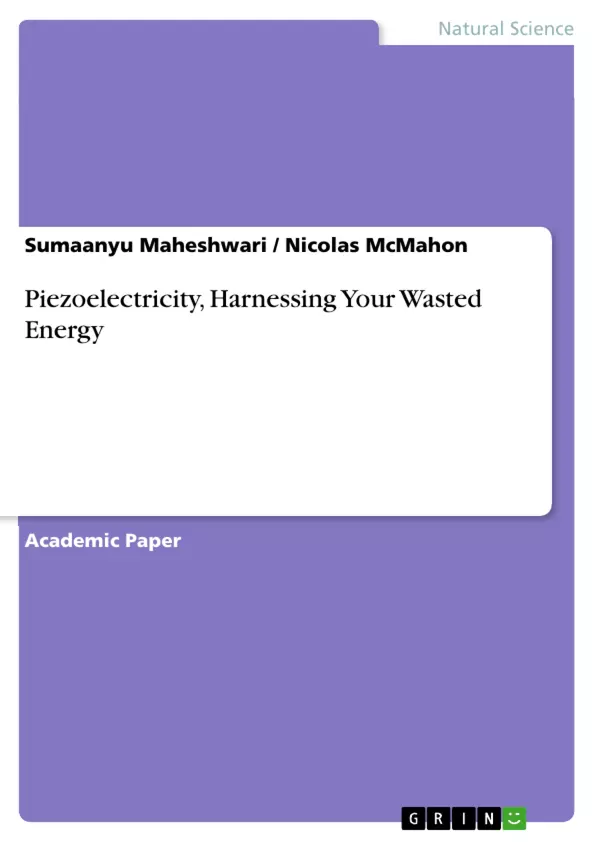Throughout our daily lives, humans waste a lot of energy. We exert a force on the ground while we walk, while we are driving, and during our many other daily tasks. Now the question is, how do we harness this energy? Our answer is with the use of Piezoelectric materials.
Research and the creation of this project was to figure out how Piezoelectricity works and how to utilize it in everyday life. We decided that creating a piece of a highway would give us the most amount of energy. The equations, pictures, and other information was accumulated through different scholarly sources found on the internet and cited at the end. We used this information to help us understand and model what power output we could get from changing a section of a highway to include Piezoelectric material.
Inhaltsverzeichnis (Table of Contents)
- Introduction to Piezoelectricity
- Background
- Our Project
- Equations and Variables
- Compartmentalization
- Pseudocode
- Examples of Completed Program
- Source Code
- Conclusion
- Works Cited
Zielsetzung und Themenschwerpunkte (Objectives and Key Themes)
The project aimed to investigate the potential of piezoelectric materials for energy harvesting, specifically focusing on how they can be used to generate power from the force exerted by vehicles on a highway. The research involved analyzing the piezoelectric effect, designing a hypothetical highway segment with piezoelectric plates, and modeling the energy output.
- The Piezoelectric Effect
- Energy Harvesting from Vehicles
- Highway Infrastructure Modification
- Power Generation and Storage
- Environmental Sustainability
Zusammenfassung der Kapitel (Chapter Summaries)
- Introduction to Piezoelectricity: This chapter defines the piezoelectric effect, explaining how certain materials generate electricity when subjected to mechanical stress. It discusses various types of piezoelectric materials, including crystals, ceramics, and even naturally occurring substances like bone and wood. The chapter emphasizes the reversible nature of the piezoelectric effect, highlighting its potential for both energy harvesting and actuation.
- Equations and Variables: This chapter outlines the mathematical equations and variables involved in calculating the energy output from piezoelectric plates, taking into account factors such as plate dimensions, vehicle weight, and frequency of vehicle traffic. The chapter provides a framework for understanding the relationship between these factors and the potential energy generation.
- Compartmentalization: This chapter delves into the process of dividing the project into smaller, manageable components or tasks. The authors describe the approach they took in breaking down the research into different phases, each focused on specific aspects of the project, such as data collection, modeling, and analysis. The chapter also explains the importance of clear compartmentalization for efficient project management.
- Pseudocode: This chapter presents the pseudocode for the program developed to model the energy output from piezoelectric plates. The pseudocode provides a high-level description of the algorithms and logic used in the program, making it easier to understand the underlying computational processes involved in the energy calculation. The chapter serves as a guide for understanding the program's structure and functionality.
- Examples of Completed Program: This chapter showcases examples of the completed program's output. It provides visual representations of the energy output under different scenarios, such as varying vehicle traffic densities and plate configurations. These examples illustrate the program's ability to simulate the energy generation process and provide insights into the potential of piezoelectric energy harvesting.
Schlüsselwörter (Keywords)
Piezoelectricity, energy harvesting, highway infrastructure, vehicle traffic, piezoelectric materials, power generation, sustainable energy, modeling, simulation, environmental sustainability, energy efficiency.
- Arbeit zitieren
- Sumaanyu Maheshwari (Autor:in), Nicolas McMahon (Autor:in), 2017, Piezoelectricity, Harnessing Your Wasted Energy, München, GRIN Verlag, https://www.grin.com/document/382490



